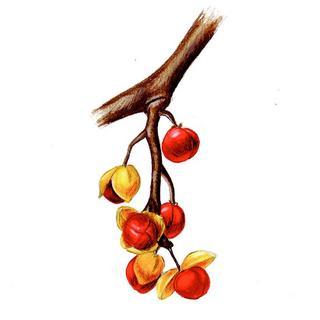Updated: 12 November, 2007 |
| Discover Life | Search | The Polistes Foundation | Proposals | Top |
|
Overview
The Invasive Plant Atlas of New England (IPANE) was created in 2001 to establish an Early Detection and Rapid Assessment Network for New England, to assess the current status of invasive plants throughout the 6-state region, and to create a network of trained volunteers and an informed public that will detect and report new incursions of potentially invasive species at a variety of geographic scales. Further, through knowledge gained from research and data analysis, and because of increased outreach and data dissemination, both rapid response to new invasions and management and control of existing populations of invasive plants can be swift and effective. IPANE, with it corps of over 900 program-trained volunteers, has become the "go-to" source of information on invasive plants in New England (and beyond) for government agencies, legislators and regulators, conservation organizations, scientists, green industries, and the general public. During this period the principal investigator (PI) will work on the following deliverables. These deliverables are aimed at continuing data gathering, dissemination, an use of IPANE data while improving the workings of the Invasive Plant Atlas of New England, adding more data to the system, and supplying more information and technical assistance to the public. A report on the accomplishments and deliverables will be submitted within 30 days of the end of this agreement. The report will include an explanation of any changes in the proposed deliverables, and suggestions for future tasks that may be undertaken with additional funding, as it becomes available. Business Plan Working with all IPANE steering committee partners, the IPANE Advisory Committee, and other interested parties with particular expertise, the PI will develop a creative business plan for IPANE that will be used to support our goals and mission and help the program sustain realistic, long-term, and reliable funding. Administration Structure The PI will evaluate the existing administrative structure and make recommendations on ways that, by restructuring the administrative parts of IPANE, will make the program more efficient and effective. This will include redefining the Advisory Committee, its membership, responsibilities, and program expectation of its members. This also includes the articulation of what is expected of steering committee partners, roles of program staff, frequency or regular staff meetings, etc. IPANE Outreach and Data Gathering The PI will continue to serve on committees and facilitate the use of our data to a variety of existing and new stakeholders such as the Connecticut Invasive Plants Council, the Massachusetts Invasive Plant Advisory Group; to present informational seminars when invited; to work with Federal Agencies such as USGS to develop the protocols for a National Early Detection Network; assist other similar programs such as IPAMS: to serve on planning committees for regional and national symposia such as the 2008 Natural Area Association's meeting focusing on invasive species; and to continue to gather data from various sources in New England that can be incorporated into the IPANE program. National EDRR Tool Kit Working with Randy Westbrooks (USGS) IPANE will make components of the National Early Detection and Rapid Response Program available on the IPANE website. Working with CIESIN, the program that NBII designated as the host of the IPANE website, IPANE will present these pages in an attractive, functional, and user-friendly form. Integrate and Check IPANE data Working with Discover life staff and with CIESIN, who are currently hosting the IPANE databases and website, and using tools developed by Discover Life such as their Global Mapper, the IPANE data will be vetted to correct mistakes, clean-up inaccuracies, and to ensure these data are available for research and management needs. On-line guide to woody vines As a proof of concept and working with Discover Life staff and partners, IPANE will develop an online nature guide to the woody vines of the northeast, with special emphasis on those that are considered invasive in the region. IPANE volunteers may be used to gather data and images and botanical organization members and staff such as those of the New England Wild Flower Society, Arnold Arboretum, New England Botanical Club, Connecticut Botanical Society, etc. will be enlisted to help with data gathering and field testing.
Budget requested from NBII:
Anticipated work period: 1 December, 2007 to 14 April, 2008
Administrative Contact
Kevin Weick, The Polistes Foundation |
